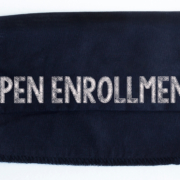What Happened To PPO’s?
In a nut shell, Preferred Provider Organizations are health plans that pay for both in network and out of network health care providers. These types of health insurance plans allow insureds to use there health plan where they see fit, resulting in more savings for the insured if they stick to their designated networks. This was made possible by plan providers creating contracts with healthcare providers in order to lower the cost for these services. With these types of plans insureds were able to manage there care without the need of a primary physician or a lack of local providers.
Starting in about 2016, states began phasing out the PPO health plan options for more Health Maintenance Organizations and Exclusive Provider Organizations. This was due to the rising cost of health care making it next to impossible for insurance companies to turn a profit with their current model. PPO health plans for families began to average around $1000 a month, pricing many Americans out of health insurance all together. States like Texas, California, and Florida have not offered PPO health plans on the marketplace since 2018. Specific carriers such as Anthem Blue Cross offer PPO plans in some states, however you would have to work directly with a broker captive with Anthem to access these options.
To my knowledge, no state has any (fully-insured, on or off exchange) national network PPO available for 2021.
The Affordable Care Act, or Obamacare as some have come to know it has made health insurance affordable by calculating an affordable monthly premium based on an applicants income. To create plans that were affordable for consumers insurance companies began pushing out more EPO and HMO options and reducing or removing all together their PPO options. Many consumers who are in need of a PPO in 2021 have to rely on private healthcare providers as the marketplace seems to have phased them out. Blue Shield of California was one of the last individual/family insurance carriers to offer a National PPO network through the BlueCard program, and this has been discontinued for 2019. To my knowledge, no state has any (fully-insured, on or off exchange) national network PPO available for 2021. The Multistate program was discontinued in 2017.
Why Should I Choose An HMO?
A Health Maintenance Organization plan is one of the more affordable types of health insurance. It is created with low premiums and deductibles, as well as fixed copays for doctor visits. HMOs require insureds to choose doctors within their network. When you sign up for the plan, you’ll select a primary care physician , this is who the insured would see for routine checkups and care. Your Primary Care Physician will need to give you a referral before you can see a specialist, like a dermatologist. Because all your health services are funneled through your PCP, it’s important to find one you trust. HMOs are a good choice if you’re on a tight budget and don’t have many medical issues.
HMO’s are also great locally! However, many of my client’s however tend to run into problems when they are out of town. With an HMO your out-of-state coverage is going to really only cover emergencies, and not much else–there’s also loopholes to what’s considered an emergency. In most cases, insurance companies are required to pay for reasonable emergency medical expenses regardless of the hospital you go to. This means that if you’re involved in a car accident and taken by ambulance to a hospital outside of your network, your insurance company should still be responsible for paying this expense.
HMO’s are also great locally! However, many of my client’s tend to run into problems when they are out of town.
Unfortunately, there is no concrete definition of “emergency,” and some insurance companies will deny claims that they judge as being not true emergencies. It’s always better to understand exactly what your insurance coverage will pay for before traveling than to run the risk of a denied claim after an emergency occurs. We would recommend supplemental accident coverage if you travel a lot for work.
Supplemental coverage is meant to be an add-on to your current coverage. You really have two options when it comes to supplemental coverage that will cover you nationally. You can get additional critical illness/accident coverage that will pay you money if god forbid you encounter an accident or bad diagnosis, regardless of location or network.
This is probably the best for frequent travelers, or those most concerned with out-of-network emergency cost) OR you can get hospital indemnity style plans where they pay you cash to cover covered services, including doctor’s visits, second opinions, and hospital stays, etc. all with a national network.
Why Should I Choose An EPO?
EPO stands for “Exclusive Provider Organization” plan. As a member of an EPO, you can use the doctors and hospitals within the EPO network, but cannot go outside the network for care. There are no out-of-network benefits. I look at EPO plans as HMO’s without the need for a referral from a Primary Care Physician to see a specialist or receive a second opinion. While an EPO restricts your health care options to the providers in your local network, this usually means you get lower monthly premiums because the providers in that network have contracts with your insurance company. On the flip side, an EPO health insurance plan often requires you to pay more out of pocket before your insurance starts covering your medical expenses.
EPO’s are also great locally but leave much to be desired when traveling out of town or state. Just like with an HMO, an EPO is going to cover out of town emergencies and not much else. An EPO insurance plan will not cover the expenses you incur from going to out-of-network providers. This probably isn’t a big deal if you’re just getting care near home, but consider that you may have to pay out of pocket if you travel somewhere and want to visit a doctor outside your network.
Just like PPO’s and HMO’s, an EPO is a type of managed care plan. Managed care plans means that your health insurance plan will cover some of your medical expenses as long as you visit a health care provider — doctor, hospital, or other place offering health care services — within a particular network. You will have to pay for some of the cost on your own, through copays, but your insurance company will step in to cover some of the costs once you hit a certain level of spending, known as your deductible.
Making Your Decision
Whether you get a plan through work or the marketplace, you can only choose a new plan during Open Enrollment, a period from November to December when anyone can get an insurance policy. If you change jobs or experience a major life change, like the birth of a child, you may qualify for Special Enrollment, which allows you to enroll in a new plan outside of the Open Enrollment period
One consideration as you look at premium costs is what kind of plan you’re getting. The cost of your premium depends on where you live and the specific plan you have. Cheaper insurance is often an HMO plan, which is more restrictive in many cases. EPO plans generally offer middle-of-the-road premiums that are priced for their flexibility. PPO options, which have become almost a thing of the past, are the more flexible and most expensive plans due to the option to visit out-of-network providers.








very happy new year to you also and thank you for post, just in time.
I actually found this more entertaining than James Joyce.
Finally, someone who can speak it to me in English!!